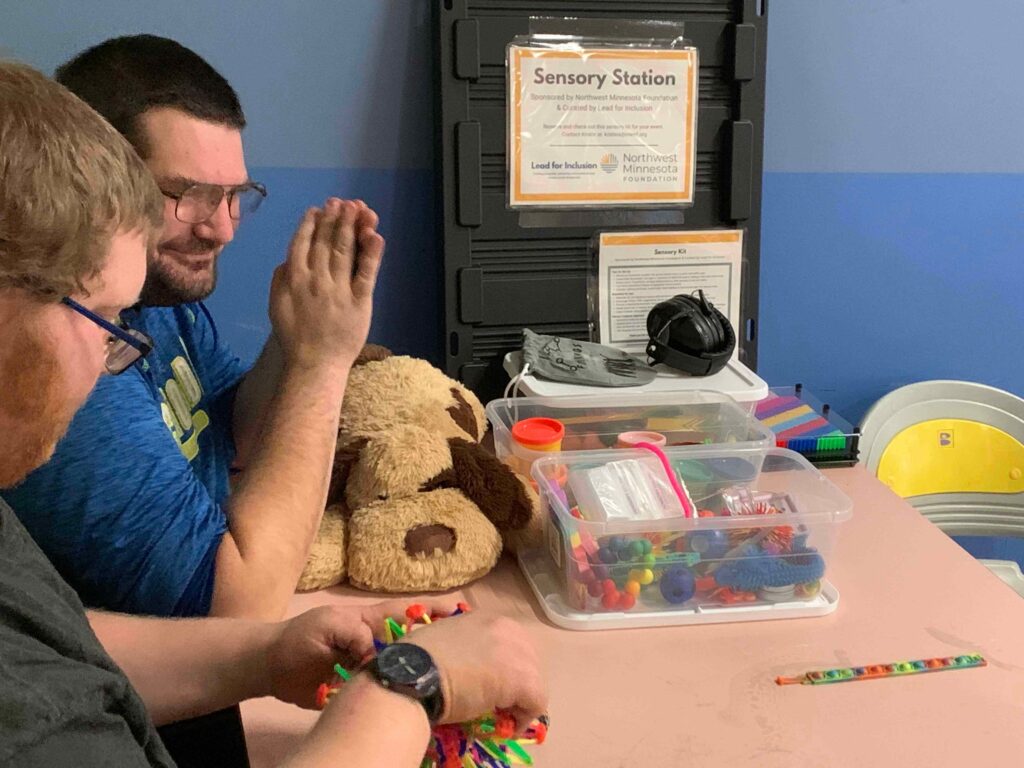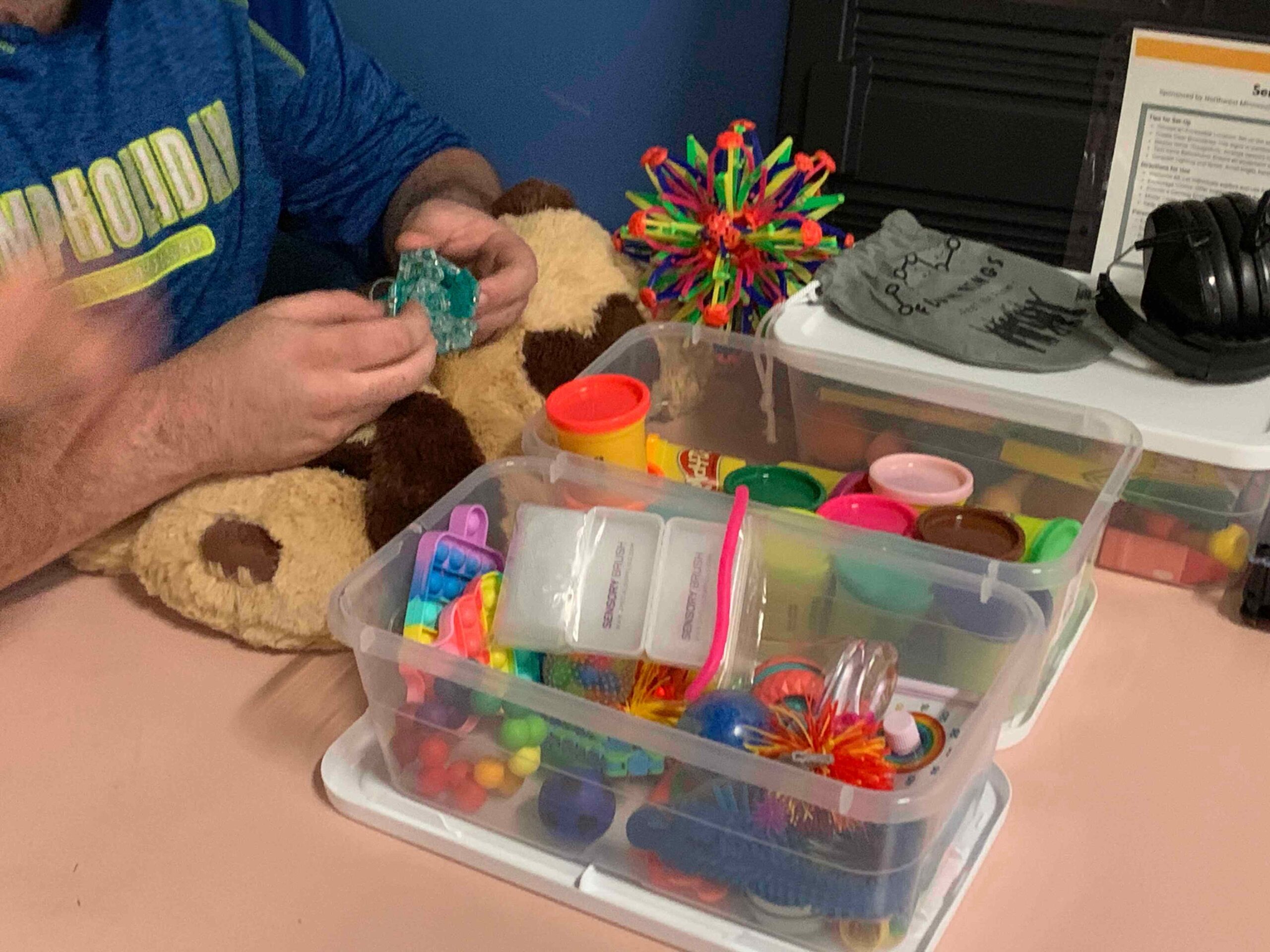Outdoor music gatherings, wintertime sporting events, restaurant get-togethers, college resource fairs – these events and dozens like them take place across our region on a regular basis, bringing people together with purpose. Yet often, these events are not accessible and inclusive for all community members.
There are simple elements that can foster inclusion and meaningful engagement at community events, said Shannon Murray, founder of Lead for Inclusion in Bemidji.
“Noise-cancelling headphones for one youth or one adult can be the difference between someone staying and participating instead of going home,” Murray said.

To promote greater inclusion, Lead for Inclusion has partnered with Northwest Minnesota Foundation (NMF) to offer tools and education to foster more inclusive spaces.
“Exclusion is not an emerging trend; people with disabilities have been fighting for the right to equitable access and opportunity for decades,” Murray said. “Even with policy changes, people and institutions often lack the knowledge needed to foster accessible, inclusive spaces.”
This winter, Murray and NMF staff collaborated to create a sensory kit, a portable box of goods designed to offer a calming, welcoming space at public events.
The kit contains items ranging from fidget toys to weighted stuffed animals, and coloring books, noise-cancelling headphones, wobble chairs, visual timers, and more. Ideally, contents of the sensory kit are placed in a quiet, low-traffic area during an event, offering individuals a calming environment when the surrounding atmosphere might feel overwhelming.
Incorporating a sensory kit and creating a sensory space at events is an important step toward creating more accessible and inclusive communities.
Sometimes, event organizers do not see or understand the diverse needs of individuals, creating significant barriers for day-to-day community engagement. In particular, the unique needs of people with intellectual and developmental disabilities are often overlooked. Nationally, over one-quarter of the population has a disability and in Minnesota almost 17 percent of youth receive special education services.
“We need to remember, the problem we’re addressing is the inaccessibility of our community spaces and events, not the accessibility needs of our fellow community members,” Murray said. “It is an important shift in language that puts the focus on our collective responsibility to create spaces that are accessible by design, not by accident.”
The NMF sensory kit is available for check-out. Any community member can request the kit for events and gatherings. For more information or to check out the kit, contact kristina@nwmf.org
Shannon Murray is one of two Northwest Minnesota fellows in the 2024-2025 cohort of the Initiators Fellowship, a program that aims to support and develop social entrepreneurs throughout Greater Minnesota. NMF is one of four Minnesota Initiative Foundation program partners.
About Lead for Inclusion
Lead for Inclusion co-creates accessible and welcoming communities through inclusive youth development. By elevating and supporting young leaders of diverse abilities, we remove barriers to belonging and increase opportunities for inclusive work and social activities for everyone.
Learn more: https://leadforinclusion.org
About inclusive design
Inclusive design is a framework for the design of places, things, information, communication and policy that focuses on the user, on the widest range of people operating in the widest range of situations without special or separate design.
Or, more simply: human-centered design (of everything) with everyone in mind
- The main inclusive design principles are:
- Inclusive so everyone can use them safely, easily and with dignity.
- Responsive taking account of what people say they need and want.
- Flexible so different people can use them in different ways.
- Convenient so everyone can use them without too much effort or separation.
- Accommodating for all people, regardless of their age, gender, mobility, ethnicity or circumstances.
- Welcoming with no disabling barriers that might exclude some people.
- Realistic offering more than one solution to help balance everyone’s needs and recognizing that one solution may not work for all.
- Understandable everyone knows where they are and can locate their destination.
Source: https://humancentereddesign.org/inclusive-design/principles




